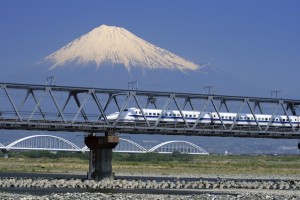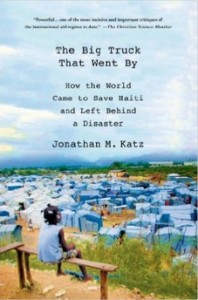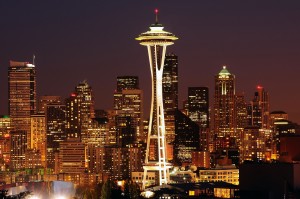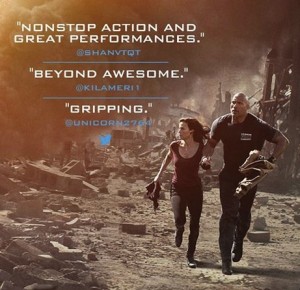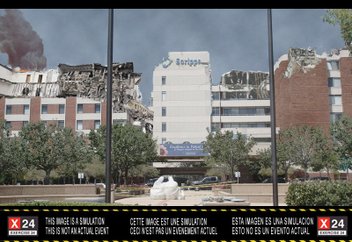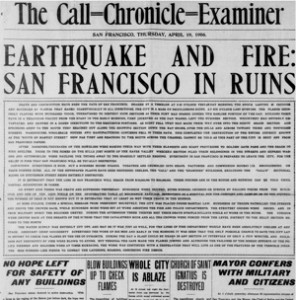Archive for the ‘Earthquake’ Category
Earthquake Strikes Taiwan
Friday, February 5th, 2016Learning from Japan
Tuesday, August 11th, 2015I was interviewed for the “Marketplace” program of National Public Radio on the topic of business culture in Japan. As I had studied the Japanese language in college, I was delighted for each and every opportunity to travel to Japan on business and with Japan’s significant earthquake exposures, reinsurance companies, such as my former employer, are very active in that market. My reinsurance experience was beyond the scope of the NPR interview, which focused more on business etiquette and cultural differences, so I will take this opportunity to share a few things I learned about risk management in Japan.
Japan is recognized as a world leader in disaster risk reduction and hosted the United Nations Second (Hyogo, 2005) and Third (Sendai, 2015) World Conferences on Disaster Risk Reduction. Disaster risk reduction is embedded in Japanese policy. You notice that when you see the earthquake safety instructions, posted in English and Japanese, on your hotel room door. The country has extensive drills to prepare emergency responders, carefully planned evacuation and safety procedures and rigorous building codes for structures to withstand a certain amount of seismic activity.
While the UN thematic conferences are beginning to work on inclusive policies for persons with disabilities into disaster risk reduction and emergency planning, Japan began mainstreaming disaster risk reduction work into the needs of the disabled more than two decades ago. I first learned of the findings of Japanese researchers when, after 9-11, the Center for the Independence of the Disabled in New York, a local non-profit organization, published a report “Lessons Learned from the World Trade Center Disaster: Emergency Preparedness for People with Disabilities in New York.” That report referenced the findings of the experiences of disabled persons in Japan following the Kobe earthquake. We learned after 9-11 what the Japanese had learned much earlier: that social isolation is the main factor explaining bad outcomes for disabled persons when disaster strikes. To be inclusive, emergency planning must take into consideration the specific needs of evacuating people with limited physical mobility or other disabilities and consider their longer-term recovery needs, such as medical support.
Finally, Japan has much to teach us about gender issues in disaster risk reduction. Japan has a network to engage women in disaster preparedness activities an area that in the United States, tends to attract relatively few women. And they explicitly consider gender issues (such as, for example, the need for possible lactation facilities in evacuation centers) in emergency planning. I missed the opportunity to participate in the program in Sendai, Japan earlier this year, but look forward to my next trip and would like to start exchanges between Japanese and American small businesses as we have much to learn from one another.
The Big Truck That Went By
Sunday, August 2nd, 2015This book is a first-rate account of Haiti’s recent history, including the January 2010 earthquake, from the only American reporter stationed in the country at the time. Jonathan M. Katz was with the Associated Press and his observations of the earthquake and the even more tragic response to it resonated with me on so many levels. He describes how the response of international donors to the earthquake created problems that did not previously exist and despite their stated intentions, largely failed to accomplish what they had set out to do.
You might be tempted to think that this type of inept response could only occur in a developing country, but then consider the lessons of some of our recent disasters. I can imagine any one of my friends in the New Orleans area nodding in agreement upon reading the sections of the book dealing with the attempts to provide food and temporary shelters to those in Haiti who had lost everything. In my experience, non-profit organizations focused on disaster relief often focus more on serving the interests of their donors than the intended beneficiaries; that is part of the reason why I set up Prisere as an LLC and not a 501-c-3 charity. (There were other considerations, too.)
The real tragedy is that many of the losses were entirely avoidable. The earthquake that struck Haiti on January 12, 2010 registered 7.0 on the Richter Scale; severe to be sure, but only six weeks later, on February 27, an earthquake of magnitude 8.8 struck Chile, causing fewer casualties, largely due to building codes ensuring safer structures. The title of the book refers to the shaking that occurs when large trucks drive by; many Haitians initially attributed the movements on January 12 to that of a passing truck until they realized it was a true earthquake. The centralization of people and services in Port-au-Prince, Haiti’s capital, that proved so deadly, was partly the result of U.S. foreign policy and actions. The author argues that as Americans, we have a responsibility to understand, and correct, the harm caused by the massive humanitarian efforts our government led. I agree.
I was surprised that the author took such an unflinching look at the apparent cynicism behind the actions of Hillary Clinton. One of her first acts as Secretary of State was to order a review of U.S. policy towards Haiti. When, hours later, the earthquake struck, both Clintons assumed very visible roles in prodding other governments and non-governmental organizations to step up. Haitians are left to live with the consequences of our response; we have moved on. The ongoing struggles in Haiti are no longer part of our news cycle.
Another surprise, at least for me, was the author’s account of the actions of the actor Sean Penn, which he personally observed. My experience at Ground Zero has led me to be somewhat cynical about celebrities appearing on the scene of the disaster to “help”. I remember only too well how, in the aftermath of 9-11, a number of celebrities callously treated the area as another velvet rope. So-called “B” and “C” list celebrities could be photographed touring the remains with a uniformed officer as their guide. An “A” list celebrity would be taken about by then Mayor Giuliani. Only when the families of the deceased protested how disrespectful this practice was (remember at that time, most of them were still anxiously awaiting recovery of the remains of their loved ones), did the guided celebrity tours stop. At that time, the families of the 9-11 victims were quite powerful as their losses gave them political clout. According to what Katz had observed, and I trust the observations of a skeptical journalist, Penn was remarkably effective at showing up with media coverage and embarrassing local officials into doing something useful.
With natural hazards increasing in both frequency and severity, we all benefit from understanding how disaster relief works and how it could be improved. We benefit even more from understanding what can be done to reduce disaster risk. This book delivers on providing critical insights into both policy issues.
Thinking the Unthinkable (But Highly Plausible)
Tuesday, July 21st, 2015When we think of earthquake risks, we tend to think of the San Andreas fault in California. Indeed, “San Andreas” the movie, was a big hit at the movie theaters last summer. But a deadlier fault line lies to the north: the Cascadia zone runs approximately 700 miles from northern California to Vancouver. And if risk models have any value, that area is overdue for a severe earthquake.
This week’s edition of The New Yorker presents a terrifying, but altogether realistic scenario, of how an earthquake within the plausible risk scenarios would be the “worst natural disaster in the history of North America. The disaster scenario modeling developed by the U.S. Federal Emergency Management Agency for an earthquake in the Pacific Northwest projects, according to the New Yorker article, that “nearly thirteen thousand people will die in the Cascadia earthquake and {follow-on} tsunami. Another twenty-seven thousand will be injured, and the agency expects that it will need to provide shelter for a million displaced people, and food and water for another two and a half million.” And, unlike Japan, which has effective emergency warning systems in place and robust building codes that take into consideration seismic shocks, the Pacific Northwest is unprepared for such a disaster. It is long past time to start demanding greater public investment in disaster resilience and possibly tax credits for retrofitting buildings for earthquake and flood hazards. We are deluding ourselves if we think we are immune to the scope and scale of comparable disasters that devastated the Asian-Pacific region.
San Andreas, The Movie
Sunday, May 31st, 2015It’s the week-end and time for a (not-so-relaxing) movie. San Andreas is expected to be a summer blockbuster and who can resist a movie about a severe earthquake with such an impressive cast and special effects? I loved the actor Paul Giamatti when he played Ben Bernanke in “Too Big To Fail” and loved him even more in the role of the seismologist in this movie. His advice to “Drop, Cover, Hold On” will probably reach more viewers, and maybe save lives, than all of the disaster preparedness public service announcements broadcast to date. In recent meetings with insurance company clients, this movie became a topic of discussion when one person remarked that fewer than 10 per cent of Californians have earthquake insurance, a figure that is unlikely to change despite the movie’s likely success at the box office.
But we all agreed that the movie both entertained us while raising awareness about the key hazards associated with earthquakes, such as the fires. The 1906 San Francisco earthquake caused gas pipes to break, thereby starting widespread fires. The movie plot captures the follow-on fire risk, helpful for those of us who didn’t learn about the San Francisco earthquake in our grammar school history classes. The movie also shows the fear resulting from the series of aftershocks that follow the earthquake. Earthquake survivors are often stressed out for never knowing how severe the next aftershock will be or when the aftershocks will end. The movie also shows how the earthquake at the San Andreas fault triggers seismic events as far away as Nevada. The special effects and the actors were fantastic.
Perhaps we could persuade the producers to make a sequel? “San Andreas Part 2” could star Dwayne Johnson as he tries to rebuild his life and his local community, following the earthquake. The recovery process goes on for years, leaving him emotionally drained. He finds that half of the small businesses he used to patronize have permanently closed as they could not resume operations following the disaster. And he raises awareness about the vulnerability of our small business economy to severe natural hazards. Actually, the sequel idea is not so far-fetched. In real life, the actor Dwayne Johnson is reported to support charities and causes aiding members of the armed forces. Military veterans are the most entrepreneurial group, as many start their own businesses after completing their service. With such star power, the sequel could raise awareness about the long-term economic consequences of earthquakes, maybe even drawing on the experiences of small businesses devastated by natural hazards.
Anniversary of the Tōhoku Earthquake and Tsunami
Wednesday, March 11th, 2015Today marks the fourth anniversary of the 2011 Tōhoku Earthquake and Tsunami, also known as the Great East Japan Earthquake, the most powerful earthquake ever recorded in Japan and the fourth most powerful earthquake in the world, since 1900 when earthquake measures were first recorded. The earthquake triggered a tsunami that struck Sendai and caused an accident at the Fukushima Nuclear Power Plant. More than 15,000 people died and millions of Japanese households were left without water and power. The World Bank believes that the losses resulting from the earthquake and tsunami reach US$235 billion, making it the most expensive disaster in history.
Among the projects to provide ongoing community support are the handcrafted linens produced by T. Kawabe & Co., Ltd., a well-known maker of towels in Japan. This photograph shows the “Charity Bear” made from a Kawabe cotton towel featuring a heart design licensed from the French company Ladurée and folded in the shape of a bear. Kawabe started this project two years ago and the towels are made and folded by fifty or so people who are living in temporary shelter since being placed by disaster. Kawabe hopes that this project will support joy and hope for renewal and rebuilding. You can support their efforts by purchasing these items on various online sites. I bought mine on eBay.
The New Normal
Monday, November 7th, 2011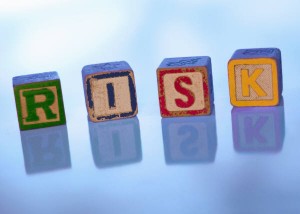 Not everyone is persuaded that our current crazy weather patterns are the result of climate change. But consider the experience of Oklahoma, a state in the heart of “Tornado Alley”. This has been an active year for tornadoes, with 104 having struck the state since January 1 to date, well above the 62 tornadoes that have struck the state annually, on average, over the past twenty years. But in 2011, extreme environmental conditions have resulted in the full spectrum of natural disasters striking Oklahoma:
Not everyone is persuaded that our current crazy weather patterns are the result of climate change. But consider the experience of Oklahoma, a state in the heart of “Tornado Alley”. This has been an active year for tornadoes, with 104 having struck the state since January 1 to date, well above the 62 tornadoes that have struck the state annually, on average, over the past twenty years. But in 2011, extreme environmental conditions have resulted in the full spectrum of natural disasters striking Oklahoma:
- Earthquake. On Saturday night, a 5.9 magnitude earthquake, the most severe in the state’s history, struck Oklahoma. Its effects were felt from Dallas to Des Moines.
- Heat Wave. Oklahoma experienced unprecedented heat this past summer, with daily average temperatures during the month of July.
- Drought. More than 99% of Oklahoma is experiencing severe drought, with extreme conditions in 85% of the state. This year to date is the second worst on record for drought; 1921 being the most severe. The drought has also affected Texas, Louisiana and other southwestern states, counting as one of the 2011 record-setting weather disasters.
- Snow/Record Cold. From extreme heat one month to extreme cold the next, Oklahoma also recorded its coldest temperature on record this year, February 10, at -31 degrees. On that same day, Oklahoma experienced the heaviest 24-hour snowfall on record, with 27 inches of precipitation.
In addition, 2011 witnessed new records for wind speed in Oklahoma, 151 mph gusts during a tornado on May 24, and on the previous day, the largest hailstone crashing down. Given the increasing frequency and severity with which natural disasters strike, we have to be prepared for anything. Call it the “New Normal”.
Ready for All Risks
Friday, June 25th, 2010 This week, a 5.5 magnitude earthquake struck Canada, with its epicenter at Ottawa, Canada’s capital city. Tremors from the quake were felt as far away as Ohio, Vermont and New York City. With attention justifiably focused on the developments in the Gulf Coast, this event was largely overlooked. But it serves as an important reminder to train all of your employees on the basic response to each major natural disaster, even if you believe that your business is located in a “safe” area. After all, we typically associate earthquakes with California or Japan, but that is not a safe assumption. Indeed, businesses in those locales are more likely to be familiar with safety procedures as they recognize the risks.
This week, a 5.5 magnitude earthquake struck Canada, with its epicenter at Ottawa, Canada’s capital city. Tremors from the quake were felt as far away as Ohio, Vermont and New York City. With attention justifiably focused on the developments in the Gulf Coast, this event was largely overlooked. But it serves as an important reminder to train all of your employees on the basic response to each major natural disaster, even if you believe that your business is located in a “safe” area. After all, we typically associate earthquakes with California or Japan, but that is not a safe assumption. Indeed, businesses in those locales are more likely to be familiar with safety procedures as they recognize the risks.
You can reduce the risk of injury due to tremors or other seismic activity by bolting heavy furniture to the office walls and ensuring that drawers and cabinet doors securely close, so that they don’t spill their contents out. I have a very heavy desk and wall unit which I bolted to the walls as I didn’t want the items to tip and fall on someone. Thankfully, I have not experienced an earthquake in my office, but as the tenants above me often stomp around and blast their stereo system, I often do experience the walls shaking, so I am glad to have taken the precautions!
Banking on Tennessee
Wednesday, May 12th, 2010On page 140 of Prepare for the Worst, Plan for the Best: Disaster Preparedness and Recovery for Small Businesses (Wiley, second edition paperback, 2009), I informed readers that when the President declares a federal disaster, early withdrawal penalties on time deposits are waived as residents and businesses will need additional cash resources to recover. Many banks are unaware of this requirement, so I recommended that if your bank is not, get the cash as soon as you need it and seek reimbursement of any early withdrawal penalties, time permitting, when you are further along in your recovery efforts. I also recommended that you immediately request forbearance on any and all loans and credit facilities. In disaster recovery mode, you will need every inch of breathing room you can get.
So I was delighted to read that Bank of America is putting into effect a disaster relief program in the 42 Tennessee counties designated federal disaster areas by the Federal Emergency Management Agency. The Bank’s disaster relief program provides that small businesses in the affected counties may qualify to avoid early withdrawal penalties on bank certificates of deposit. They may also receive emergency credit line increases on their bank credit cards and may modify or extend payments on loans, credit cards or lines of credit. This is exactly the way to proactively help small business customers in the aftermath of a disaster.
And may I make an additional suggestion to the Bank of America? In the aftermath of a disaster, many small businesses with otherwise pristine credit histories will develop blemishes on their credit reports though no fault of their own. The business will inevitably have some customers that were unprepared for the disaster and will be delayed or default entirely on their obligations, causing some strain on the business. This is the time for banks to show some flexibility and take these factors into consideration for loan applicants.
At a time when bashing banks has become politically fashionable, we should remember how they support our communities. In banking on Tennessee, Bank of America is being true to its roots. A.P. Giannini, the founder of Bank of Italy, the institution that is the predecessor to the Bank of America, saw the opportunity represented by the devastating San Francisco earthquake of 1906. As other banks succumbed to panic, his made emergency loans to customers, mostly immigrant owned businesses, earning the bank their loyalty. This cemented the Bank’s position as a leading financier to the film and wine industries in northern California.
